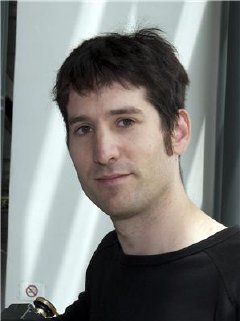Jun 25 2009
A new simulation program optimizes the structure and configuration of the metallic contact fingers in concentrator solar cells, thereby improving the efficiency factor, and a highly-sensitive method of producing cDNA fragments from biological sample material has been developed.
 Marc Steiner
Marc Steiner
The efficiency factor of solar cells is crucial for the success of generating electricity from sunlight. Systems in which light is concentrated 400-fold through lenses onto solar cells are proving to be particularly advantageous. This concentrator technology enables expensive semi-conductor material to be replaced with cheaper lens systems, and greater efficiency to be achieved. In his thesis, physicist Marc Steiner from the Fraunhofer Institute for Solar Energy Systems ISE in Freiburg presented a way of increasing the efficiency of these concentrator solar cells even more. The contacting of the semi-conductor layers plays a crucial role here, and Marc Steiner's new simulation program optimizes the structure and configuration of the metallic contact fingers. These calculations yielded unprecedented efficiency factors for concentrator solar cells. Marc Steiner will be awarded the 2nd Hugo Geiger Prize for his thesis "Minimization of serial resistance losses in III-V solar cells with the aid of a SPICE network simulation".
Genes play an important role in every organism, particularly where its development and adaptation to the environment are concerned. Modern sequencing technology means that genomes can now be quickly mapped. However, it is still not entirely clear which genetic program is running during which phase of growth. Gene expression - that is, the analysis of which genes are switched on at any given point in time, and which are not - can supply the relevant answers. This helps to differentiate cells, and to understand biological systems on a molecular level. The aim of the thesis "Global methods for the analysis of metatranscriptions on the single-cell level" by Christian Grumaz from the Fraunhofer Institute for Interfacial Engineering and Biotechnology IGB was to establish a new, straightforward procedure that gets by with small sample quantities and enables a high throughput. "I was able to complete this plan successfully," says Christian Grumaz. The procedure is extremely sensitive, which means that it could potentially be applied in diagnostics, where biopsy material, for example, is usually only available in small quantities. A high throughput of samples is also possible, as parallel sequence technologies can be used. The analysis procedure is of interest for diagnosis, drug development and basic research. Christian Grumaz will be awarded the 3rd Hugo Geiger Prize for his paper.